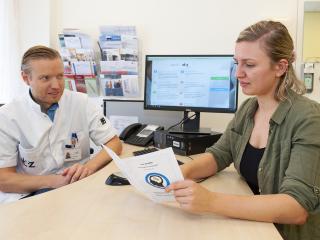CentERdata investigates crime on business parks
Eighty percent of crime in the Netherlands is drug-related, such as the production, processing, and trafficking of drugs, but also money laundering and prostitution. Much of this crime takes place on business parks. How do you determine which business park is most at risk? And to what extent can data science help to develop effective policies? By order of the Ministry of Justice, CentERdata started working on these questions.
'Which toxic cocktail of factors encourages crime?'
“Drug-related crime and subversion—in which the boundary between the legitimate and illegitimate business worlds becomes blurred—are major problems in the Netherlands. Run-down business parks often provide a fertile breeding ground for criminal activities,” says CentERdata’s lead researcher Patricia Prüfer. “Often experts from the police, for example, have, on the basis of experience, an idea of the causes. But until now, there has been a lack of supporting data analyses and objective tools to predict why and where problems occur. What are the indicators for organized crime and subversion on business parks? And where is a specific business park positioned on the 'sliding scale' of organized crime and subversion? The ultimate aim of the research was to provide administrators with concrete tools to help them determine what stage a business park is at.”
‘The exploratory research is promising, now more large-scale research is required.'
- Patricia Prüfer

Dates for policy
CentERdata carried out the research on behalf of the Dutch Researcg and Documentation Centre (WODC) of the Ministry of Justice and Security. The research institute has extensive knowledge of policy research and data science techniques. CentERdata collaborated with the Lector Subversion Emiel Kolthoff of Avans Hogeschool and the Tilburg University Data Science Center, which has technical and methodical knowledge of data science. In addition, Tilburg University has a number of researchers from different Schools who specialize in fraud, the fight against crime, and subversion.
Predictive value
Further parties were involved in the research itself. Prüfer: “For example, the Integrated Business Information System (Integraal Bedrijventerreinen Informatie Systeem (IBIS)), the police, Crimestoppers NL (Meld Misdaad Anoniem), and the Central Information line (Centraal Meldpunt) of the Tilburg Municipality and of the network operator Enexis. We used data from these parties, as well as from the Key Register Addresses and Buildings (Basisregistratie Adressen en Gebouwen (BAG)) and the company register of the Chamber of Commerce. We wanted to know to what extent these data have predictive value. We analyzed the data using the data science method Random Forest, a so-called supervised learning algorithm. A large number of different data models were compared to each other. Subsequently, it was determined which model has the best predictive value.”
Combination of factors
Did the research yield surprising results? “Not so much when it comes to the question of who engages in criminal activity,” says Prüfer. “Often the 'the man in the white van' really did it. It was more interesting to see which combinations of factors are of influence. What poisonous cocktail encourages crime? Vacancy in itself is not necessarily a problem, but in combination with other factors related to the physical environment—such as degradation—it may be. Obsolescence and vacancy, the value of the property, the level of supervision, the number of reports to the police, the turnover on a business park: these are all factors that play a role. But the type of business is also important, in terms of legal structure and size. And yet another indicator is the presence of many additional branches, such as additional Chamber of Commerce registrations and warehouses.”
Collaboration
The study was carried out based on data from thirty business parks in Tilburg. Prüfer: “Tilburg Municipality is very active in combating subversion and has various other research carried out in this area. Besides the fact that CentERdata itself is also based in Tilburg, this was a good argument to carry out the research here. The collaboration with the other parties was pleasant. In the end, many parties turned out to be willing, under strict conditions of course, to hand over data for our research. Incidentally, this did not work out for all the parties approached. We would have liked to include the Tax and Customs Administration and banks in our research, but with a view to legislation and regulations—think of the GDPR privacy legislation—it was still too difficult for them to collaborate. “
More research
“The research yielded first valuable insights into which factors contribute to crime and subversion,” concludes Prüfer. “But further research on a larger scale is needed in order to be able to draw real conclusions. That is also what the ministry is aiming for. It is also interesting to look beyond business parks alone. To what extent do the same risk factors apply, for example, to old farms? Questions we like to work with.”








